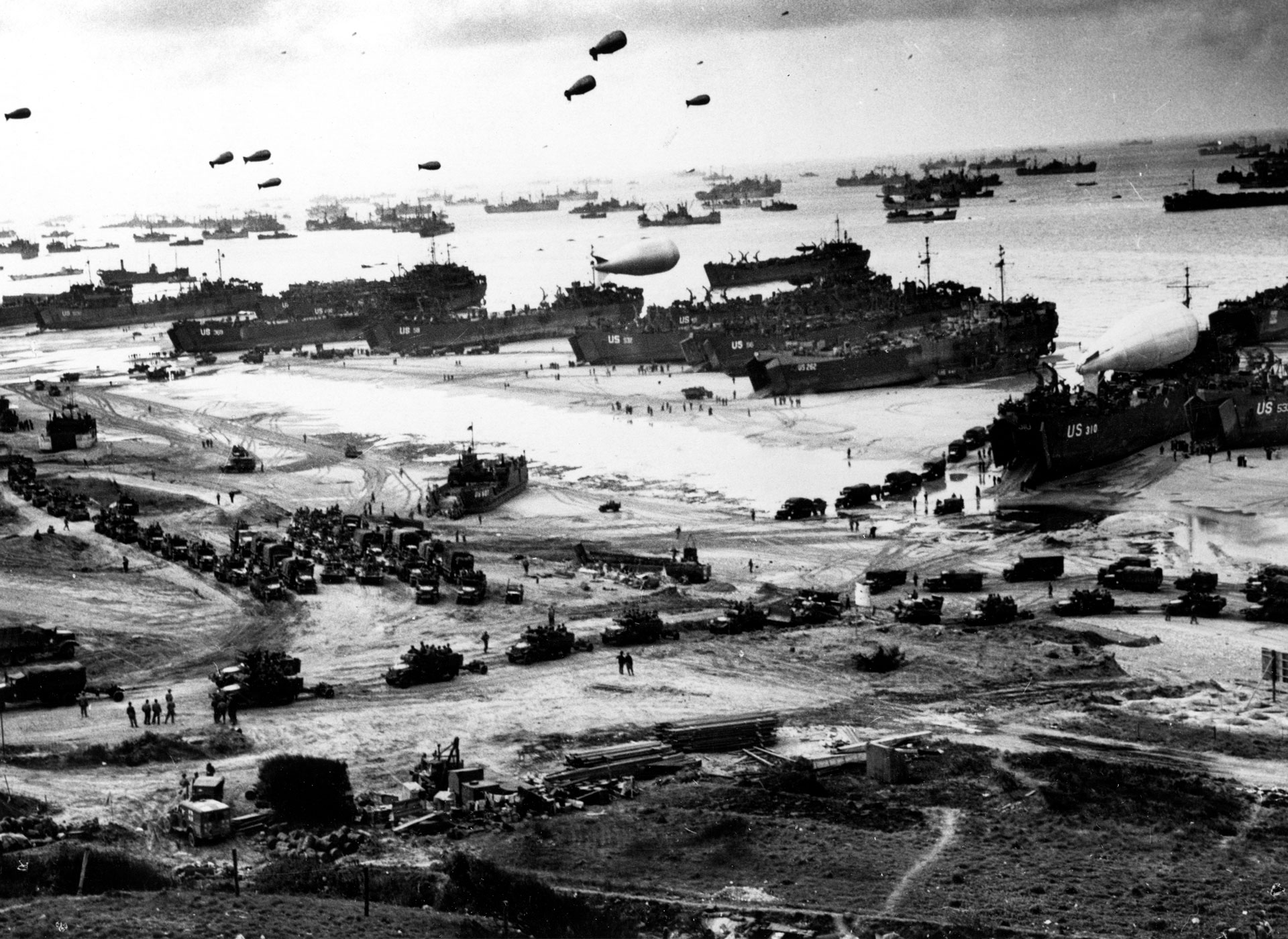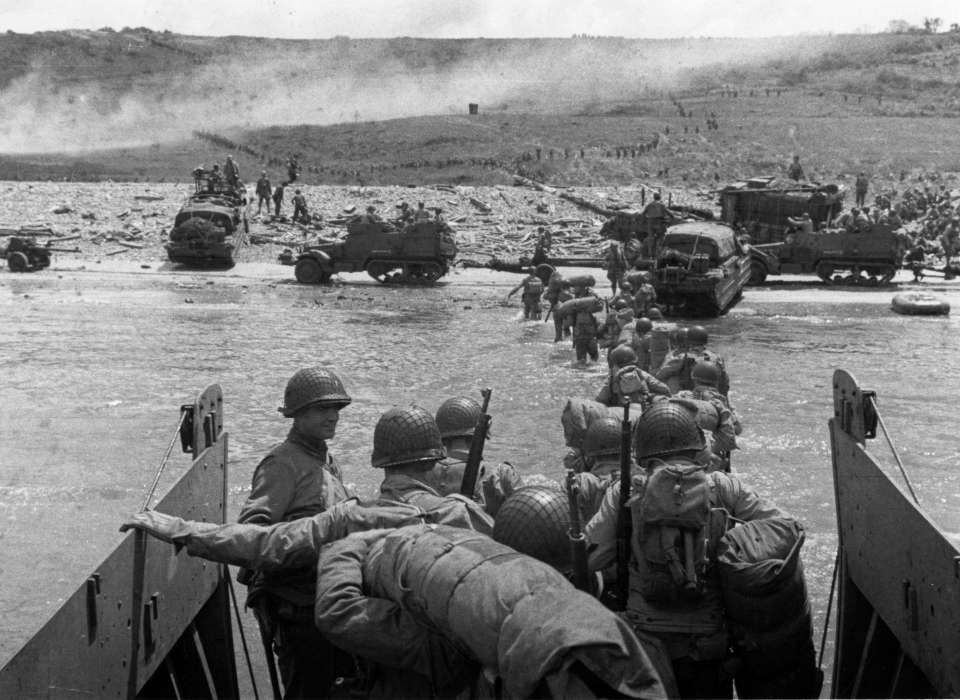D-Day
Questions for Reflection:
1) Dwight D. Eisenhower became the 34th President of America in 1953, nearly a decade after leading the D-Day invasion of Normandy. What qualities of an effective military leader also make an effective president? Why do you think so many American Presidents have been former war heroes?
2) Many allied nations joined together to defeat the Axis powers in WWII. What are some of the reasons the U.S. joined the fight? Why do you think the U.S. delayed entering WWII until 1941?
3) Under which circumstances do you believe America should exercise military force in foreign conflicts?
4) If you were a soldier landing on a beach of Normandy on D-Day, which do you think would be your primary emotion? Pride, patriotism, sense of mission, fear, or something else?
5) WWII Theme Question: In which ways did the invasion of Normandy change the course of WWII?

Soldiers and equipment arriving at Normandy following D-Day invasion (June, 1944)

Soldiers landing at Normandy on D-Day (June 6, 1944)
By May 1944, 2,876,000 Allied troops had gathered in southern England, practicing for the invasion. History’s largest armada was assembled of more than four thousands ships. Over 1,200 planes were also ready to support the invasion.
The German fleet in the area on D-Day consisted of three torpedo boats, several U-Boats (submarines), twenty-nine fast attack craft, some patrol boats, and thirty-six R boats and other craft used for removing naval mines. On the Allied side, most of the ships were British, and the overall commander was British Admiral Sir Bertram Ramsay who had planned the naval invasion of North Africa in 1942 and Sicily in 1943.
Eisenhower had chosen June 5th, 1944 for the invasion, but high winds caused a delay. After conferring with meteorologists that the following day would have better weather conditions, Eisenhower approved the invasion for the following day.
North African Campaign
The North African campaign began with the Italian declaration of war in June 1940 and was initially fought between the British and Italians. The German Afrika Korps entered North Africa in February 1941 to support the Italians and was commanded by Erwin Rommel who would earn the nickname “Desert Fox.” The Americans began providing military support to North Africa in May 1942, along with a small Canadian contingent. After battles for control of Libya and Egypt, the British forced a German retreat into Tunisia. The Americans and British landed in north-West Africa in November 1942 and forced the Germans and Italians to surrender in May 1943. With North Africa liberated from the Axis powers, the Allies were then ready for a mass invasion of Europe.
Replica source: D-Day Statement to Soldiers, Sailors, and Airmen of the Allied Expeditionary Force, June 6, 1944, National Archives, Eisenhower, Dwight D: Papers, Pre-Presidential, Collection DDE-EPRE, National Archives Identifier 186473, https://catalog.archives.gov/id/186473
D-Day Dress, Platoon Leader, June 1944, National Archives, Records of the Adjutant General's Office, Record Group 407, National Archives Identifier 18558249, https://catalog.archives.gov/id/18558249









